Introducing the Varied Thrush!
Among the many birds in the Pacific Northwest, one of the most reclusive is the Varied Thrush! Although not often seen, it’s eerie song can be heard across British Columbia in it’s many forests from the coast to east of the Rocky Mountains.
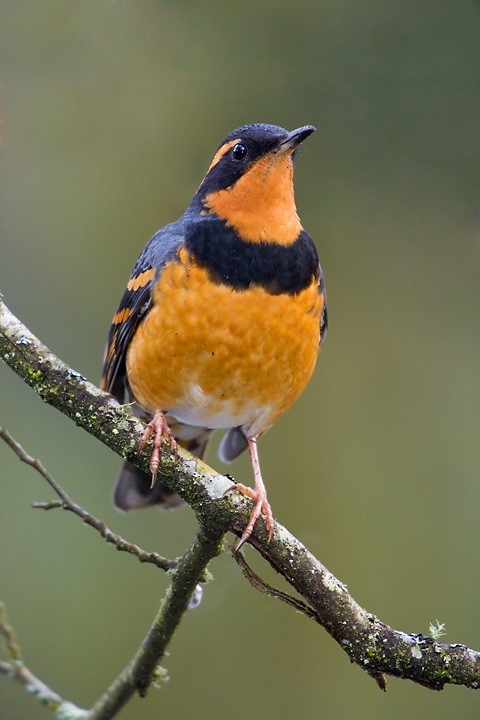
Description
The Varied Thrush (Ixoreus naevius) is a passerine and belongs to the Turdidae family. While it is the only member of its genus, there are four recognized subspecies, which are defined by subtle differences in female plumage (American Bird Conservancy). The Varied Thrush is a relatively large species of thrush, comparable to the American Robin in size, although slightly larger on average, weighing between 65 and 100 grams for both sexes (The Cornell Lab of Ornithology). The Varied Thrush is a very vibrant bird, with both sexes displaying a distinct bright orange breast, throat, and supercilium, along with orange interspersed with gray throughout the wings. It should be noted however that female and immature Varied Thrush have very similar plumage and are difficult to distinguish by sight, although juveniles also have whiteish bellies (Animal Diversity Web). Winter is typically the best time to observe them, as they stand out against the white snow and have much less vegetation to obscure them. It is such a classic bird in British Columbia that the Atlas of Breeding Birds of British Columbia made the bird their logo!
The song of the Varied Thrush most likely going to be the first sign of its presence on walks through the old growth forests of the Pacific Northwest, and despite not knowing what it was previously, you will likely be able to recall hearing its distinctive sound. Its calls are haunting and echo through the forest, seemingly without a source, as they produce long single tone whistles with pauses in between. The song of the Varied Thrush has been described by Louis Agassiz Fuertes, a twentieth-century bird artist and friend of Cornell Lab founder Arthur Allen “as perfectly the voice of the cool, dark peaceful solitude which the bird choses for its home as could be imagined” (The Cornell Lab of Ornithology). While their songs are absolutely unmistakable, their calls are a much more quaint “chirp” sound.
Habitat and Distribution
The Varied Thrush can be found from as far north as Alaska to as far south as southern California (Grinnel. J, 1900) and as far east as Alberta, although they avoid the drier interior plateaus and the north-eastern plains (Atlas of the Breeding Birds of British Columbia). Varied Thrush are only partial migrants, meaning they do not migrate very far during winter. The inland breeders migrate south during the winter, but the coastal breeders do not migrate at all and remain year-round , such as here on Vancouver Island (The Cornell Lab of Ornithology). One interesting tidbit about the Varied Thrush is that individuals can occasionally end up significantly outside of their typical range. Varied Thrush have been documented in every province in Canada and in every state in the US!
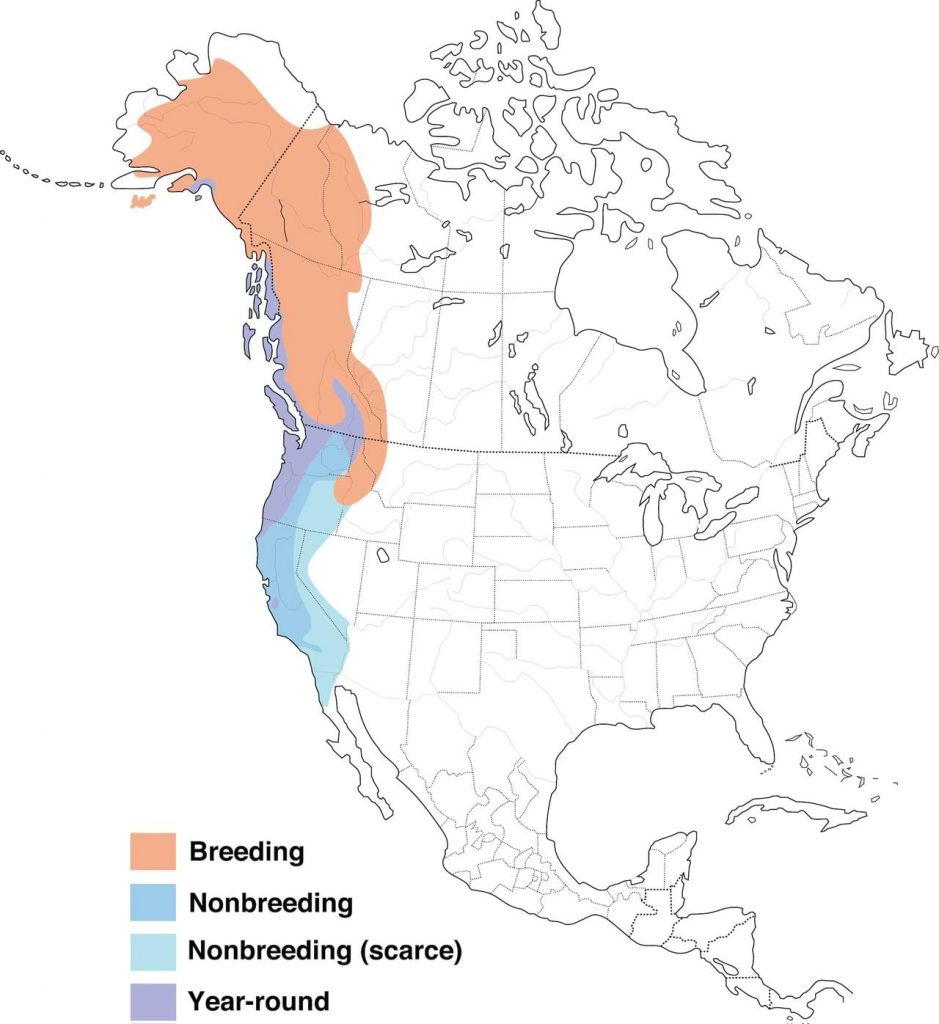
While the Varied Thrush lives in the cool forests from the Rocky Mountains and west, it thrives in the wet rainforests of the coast and Coastal Mountains where it has the highest abundance (Atlas of the Breeding Birds of British Columbia). Its biogeoclimatic zones that contain the greatest populations are Coastal Western Hemlock, Engelmann Spruce, Subalpine Fir and Interior Cedar, and Hemlock. It should also be noted that elevation also plays a major role in their distribution, in that they prefer either low or high elevations, but do not prefer the intermediate or extreme zones.
Behaviour
The reason the Varied Thrush is so difficult to spot is due to its habitat and feeding behaviour. It does much of its foraging on the ground within dense vegetation, but will occasionally move to a higher perch to sing and move between foraging sites (The Cornell Lab of Ornithology). It uses its bill to search through leaf litter for insects in the summer, but switch to berries, fruits, seeds and nuts during the winter (Audubon). During the breeding season, the males typically reach their territories before the females and are very territorial. They have several threat displays, including raising and fanning the tail, spreading its wing out to the side, and lowering its head. When fighting over territory or chasing nest intruders, they will dive through dense shrubs and vegetation, hitting branches along the way. They are believed to establish monogamous breeding pairs, although how long they remain together is uncertain (The Cornell Lab of Ornithology). Males also sing to defend their territory, doing so most frequently at dawn, dusk, and after rain (Audubon).
The female is probably the one which decides where to build the nest. Nests are typically built in a conifer at the base of a branch around 3 meters high, but they sometimes build far higher or very close to the ground in dense thickets (Audubon). The female typically lays a clutch of between one and six eggs, and can do so up to two times per breeding season. Their eggs are pale blue and lightly dotted with brown. While the incubation is done mostly by the female and takes around 12 days, both the male and female feed the hatchlings for around 14 days which is when fledging occurs and the new birds leave the nest (The Cornell Lab of Ornithology).
Conservation Status
The Varied Thrush are considered a common bird and were listed a species of least concern by the IUCN Red Kist in 2016 (IUCN). It should be noted however that populations have declined by over 2.5% per year between 1966 and 2015, and it was listed as one of the common birds in steep decline in 2014 by the State of Birds (The Cornell Lab of Ornithology). Since the Varied Thrush lives in mature and old-growth forests containing large trees, habitat loss and fragmentation is considered one of the most likely causes of this decline, especially when they do not usually live in forests of less than 40 acres. Other common causes of death include window strikes and predation to domestic cats. It has been suggested that the Varied Thrush would benefit from the reserves that were created for the Northern Spotted Owl (The Cornell Lab of Ornithology).
Recent Research
The Varied Thrush appears to demonstrate a systematic change in abundance every two to three years within their normal wintering range. As it turns out, most boreal seed-eating birds exhibit the same cyclical abundance change, and they do this because of broad geographic periodicity in fruiting of their favoured seed crops like birch, spruce, and oak. This might suggest that the Varied Thrush my be reliant on a food source that varies in availability every two to three years as well especially given that Oak was identified as one of the Varied Thrush’s most common food sources, with acorns representing up to 76% of their food intake during November in the American Northwest (Wells, J. V. et. al., 1996).
Another more recent piece of research involving the Varied Thrush was about detecting patterns in biodiversity and phenology by recording bird calls and running them through an algorithm to create an Acoustic Complexity Index (ACI), which represents an index in bird community complexity. The species that had the most complex call was the Pacific Wren, while the most commonly recorded bird was the Varied Thrush. Given that the ACI can be used as a measure of both species richness and abundance of Varied Thrush calls, the authors suggest that the abundance of Varied Thrush calls can be used as an indicator of complexity. That is, a measure of the abundance and complexity of Varied Thrush calls can be used to create a standard, and any change in the abundance and variation can be interpreted as a change in overall biodiversity in the region (Buxton, R. T. et. al., 2016).
Closing Thoughts
The Varied Thrush is a wonderfully vibrant bird in both its colour and calls! Next time you’re out hiking and you hear its haunting song echoing through the woods, keep an eye out for this fantastic representative of British Columbia’s forests!
References
Grinnell, J. 1900. The Varied Thrush in Summer. The Condor, 2(1): 5-7. doi:10.2307/1361148.
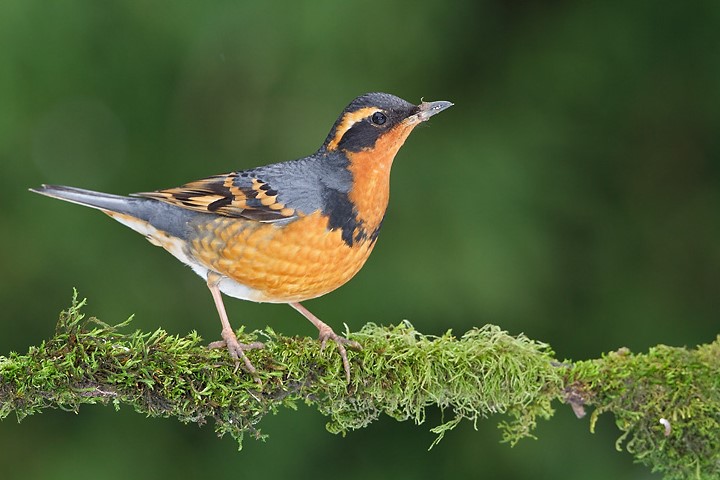
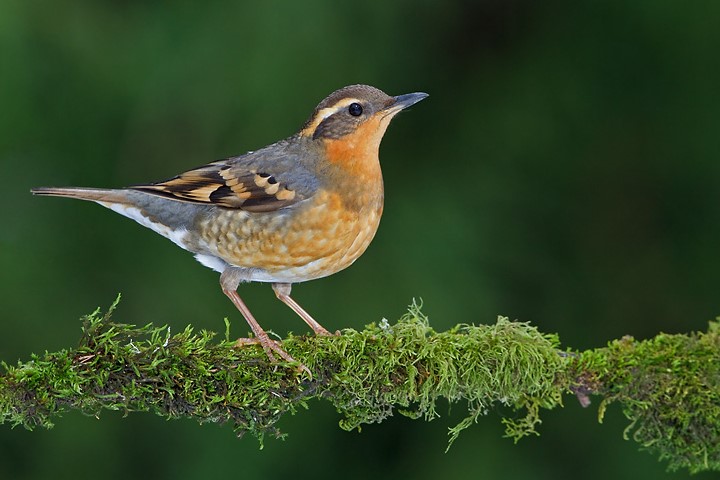
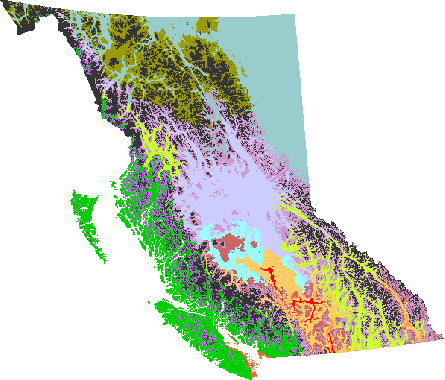
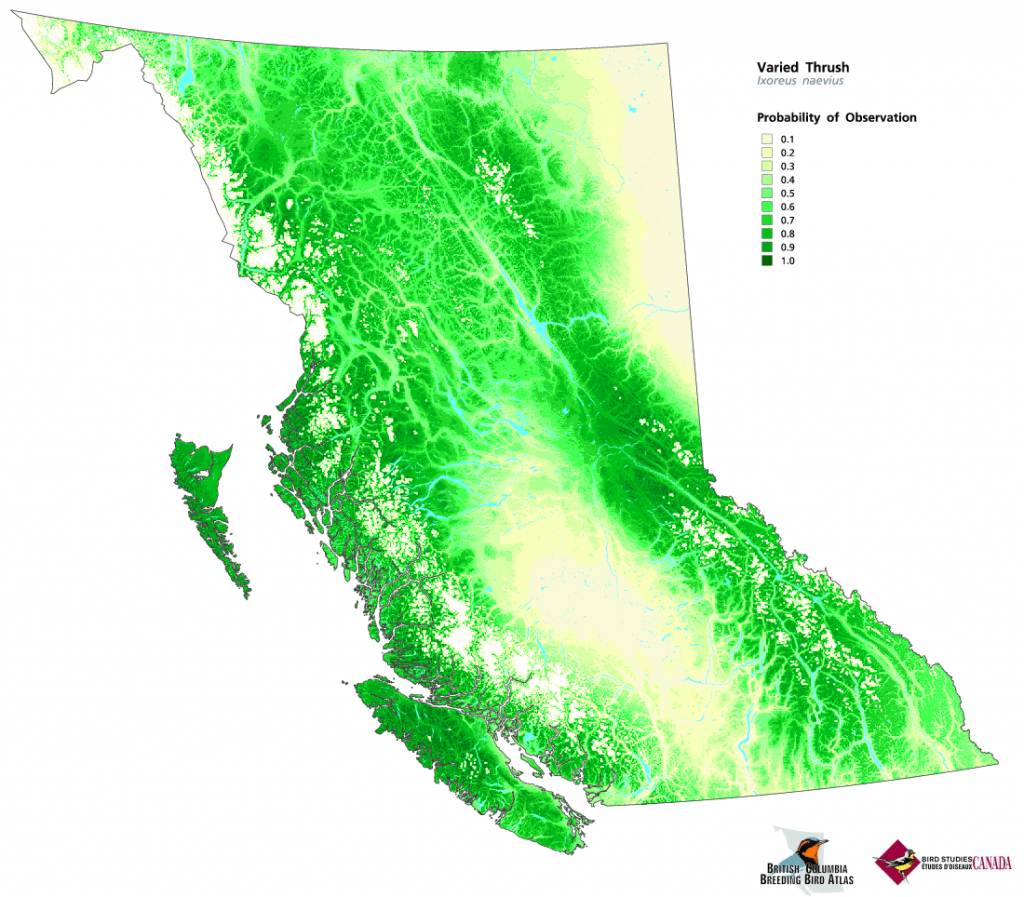
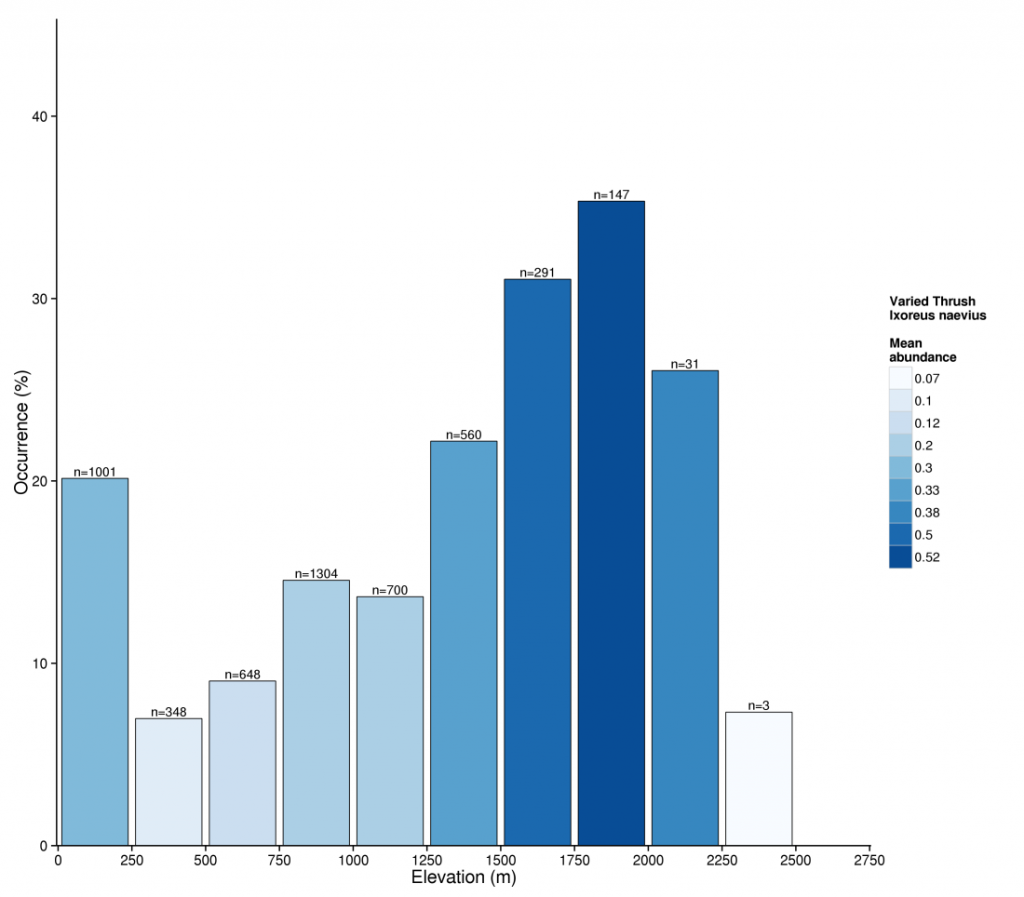
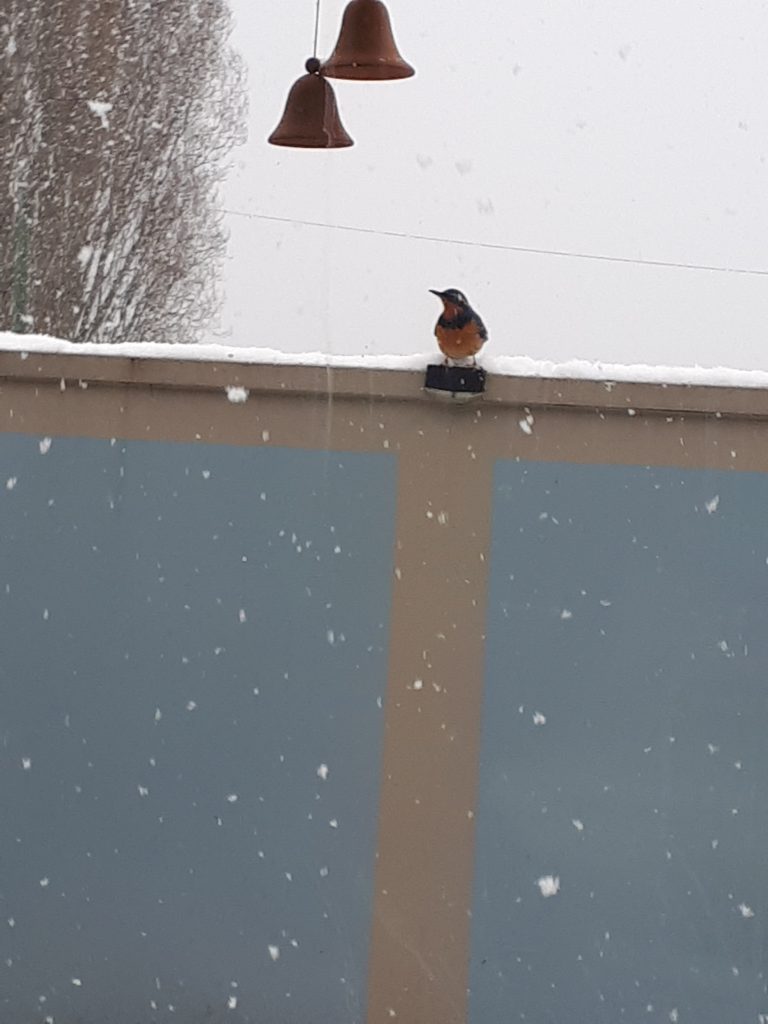
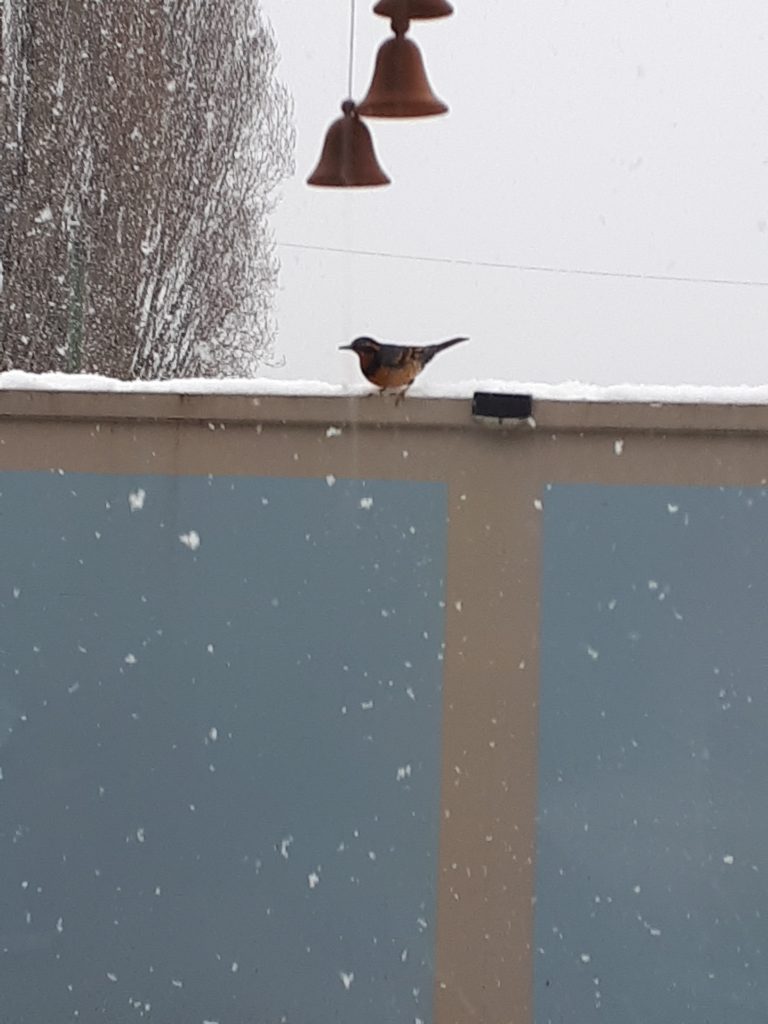
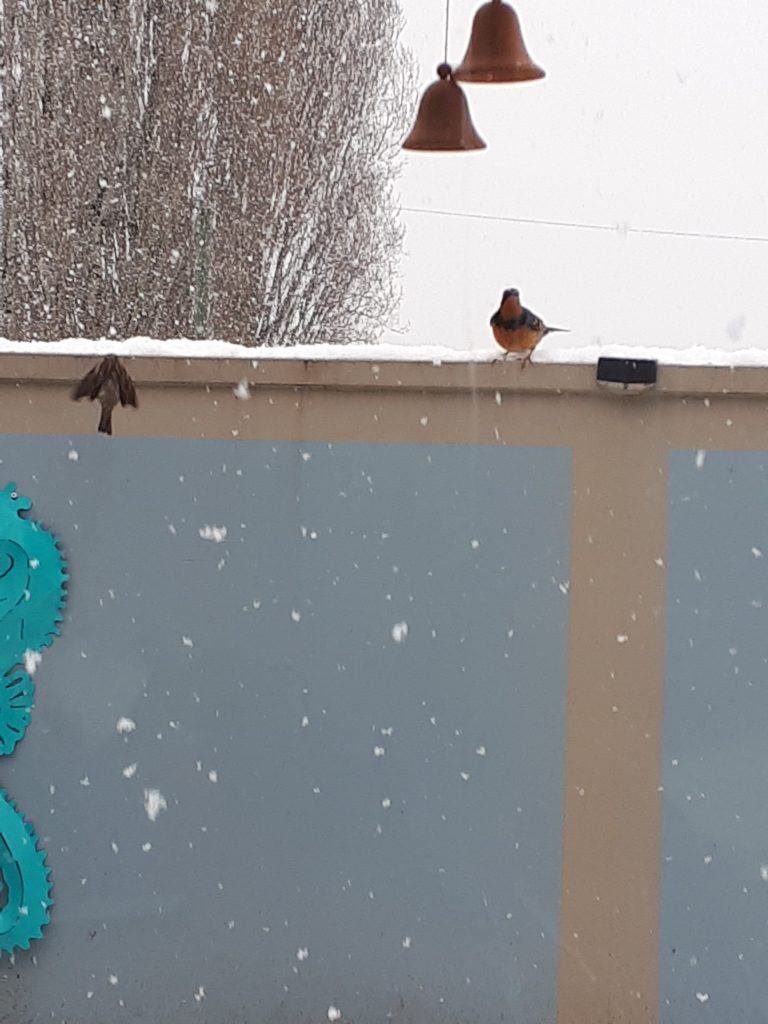
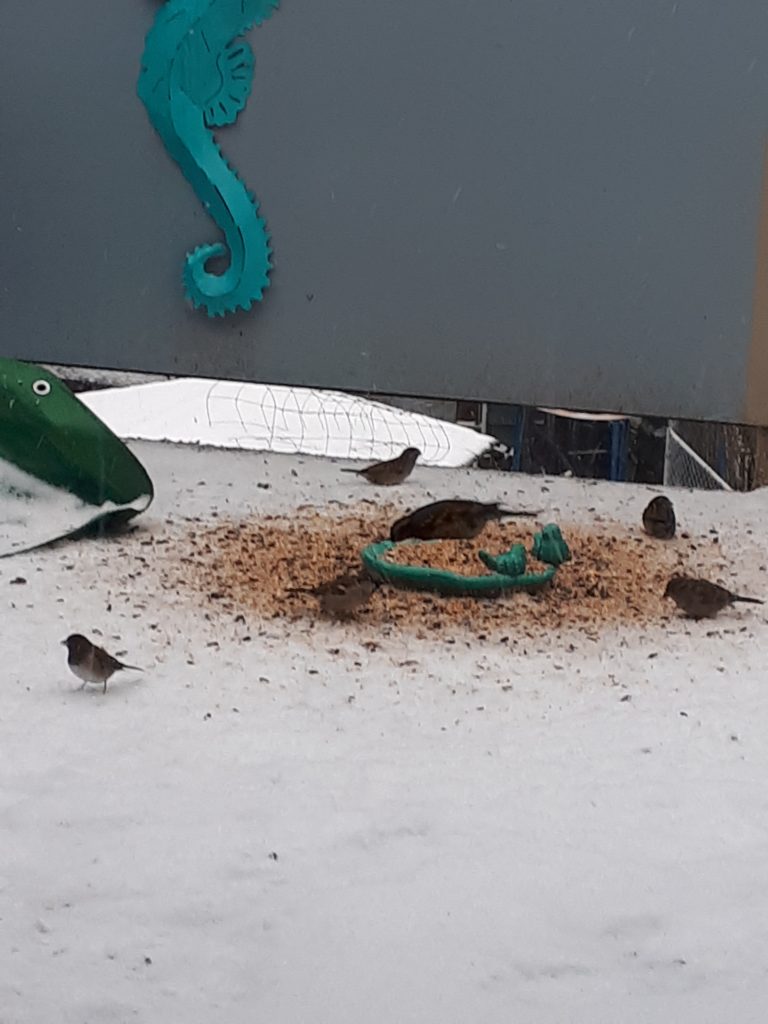
Hi Adam,
Interesting blog. I really enjoy this species, especially their song. I’ve tried to practice imitating the call myself but I can never get it right. It’s like whistling and humming at the same time!
I thought it was really interesting that there had been no sightings of VATH in NFL so I checked the eBird distribution. Looks like there have been sightings in every province, including NFL! You might also want to check out the USA records as well:) Ebird is an awesome tool to see where birds have been reported and also when!
You mention in your research section that “the authors suggest that the abundance of Varied Thrush calls can be used as an indicator of complexity.” Could you elaborate on that?
Thanks for sharing your love of VATH!
Cheers,
Sam
Hi Sam, I’m glad you enjoyed the blog! I never though to check eBird for potential sightings, I definitely should have! It does have a fantastic song, it would be awesome to be able to copy it!
In regards to your question, as I understand the source material, ecological complexity is essentially a measure of biodiversity within a region and the biodiversity of a region can be measured using the genetic and behavioural diversity of key species. The Varied Thrush is a key species in their ecosystems, and so a measure of the abundance and variation within their calls can be used to create a standard within a region, and any change in the abundance or variation can be used to predict a change in overall diversity within that region. Great question, it took me a while to understand what they were trying to say as well, so I could have done a better job trying to communicate that as well!
Have a great day!
Adam
Interesting write up on one of my favorite species.. I always love hearing the ethereal song of the Varied Thrush. It was my choice for the Official BC Bird back in ‘87.
One small correction, the identification of the flight feather is incorrect. The feather in the photo is actually from a ‘red-shafted’ northern flicker.
Thank you for the correction! I’ve just recently gotten into bird identification, and appreciate the correct ID! It’s especially obvious now that I know what it belongs to. It definitely would have had my vote too!
Thanks for reading my blog, and have a wonderful day!
Adam
And they taste like chicken.
What are KFC’s 11 herbs and spices? Don’t worry, I won’t tell anyone…
Hi Adam,
I really enjoyed the read. I’ve never had the chance to see one and after reading your blog it makes sense, I guess I better start learning their call. I had a quick question and I’m not sure if I just missed it, however, why would they show up as far as the other side of the country, if they are only partial migrators, and prefer the BC environment?
Thanks for the fun read,
Eden
Hi Eden,
I was honestly wondering about that as well! From what I have read, it could be a behaviour that comes from their past, and resulted in their initial migration to North America from Asia. Given how far they have been found from their normal range, it makes me wonder why they haven’t populated the rest of North America as well since they seem to be able to survive well in these environments as well. For the most part though, it is still a mystery why they appear so far from their typical range. Thanks for checking out my blog!
Adam
Hey Adam,
Great job! I really enjoyed reading your blog. You mentioned that the Varied thrush lays eggs that are pale blue with brown specks, do you know causes this coloration?
Cheers,
Vivian
Hi Vivian,
That’s a great question! From what I have read, is seems that the blue tone of many bird eggs comes from a bile pigment called biliverdin, which is a product of heme protein breakdown. As for the brown flecks, I am not to sure, but I think it might be the natural shell colour and the blue covers up most of the other colours. Thanks for reading my blog!
Adam